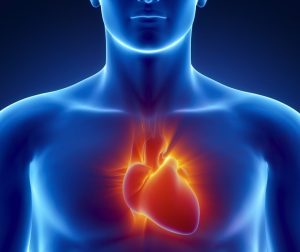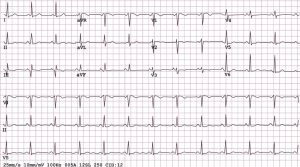
According to the American Heart Association, heart disease is one of the most prevalent health risks globally, with about 20.1 million adults age 20 and older having coronary artery disease in the United States.
Heart disease is also the leading cause of death in the United States, according to the Centers for Disease Control & Prevention.
While the prevalence is across all ages, races, and gender, with men and women both at high risk, heart disease seems to impact men at a higher level and is typically diagnosed at earlier ages in men. This is likely due to the higher incidence of smoking, alcohol use, obesity, diabetes, and fewer visits to a health care provider that is seen in males.
This data illustrates the root causes and risk factors associated with heart disease and the importance of avoiding all of the mentioned lifestyle factors as much as possible.
In what follows, we’ll define the characteristics of heart disease, its signs and symptoms and causes, and the proactive ways to prevent it. This will include the practice of health screenings and monitoring as individual ages.
Characteristics of Heart Disease
Heart disease encompasses several types of heart-related conditions, including coronary heart disease, heart failure, and certain arrhythmias. One of the key concepts about heart disease is that the heart requires adequate blood flow and oxygen delivery to function normally.
The signs and symptoms of heart disease include chest pain, shortness of breath, and irregular heartbeat. Additional signs and symptoms are fatigue, confusion, unjustified dizziness, and fluid on the lungs.
Depending on the type and severity of heart disease, it’s likely that individuals will experience more than one symptom simultaneously. There are, however, some cases of heart disease in which the individual had no symptoms.
Preventing Heart Disease
The causes of heart disease are easily identifiable and relate to lifestyle factors. The most common causes and risk factors include obesity, chronic smoking, alcohol abuse, living a sedentary lifestyle, diets high in saturated fat, diabetes, stress, and family history of heart disease.
To combat the risk of developing heart disease, then, it’s important to improve the lifestyle factors that influence heart health. Smoking cessation is the very first thing that should be initiated. Quitting smoking will not only be good for your heart health, but it will also decrease the risk of many other health issues.

Some of the most effective preventative methods for heart disease concerning lifestyle interventions include a heart-healthy diet and an active life that entails physical activity and exercise.
An important aspect of your health that you should investigate thoroughly is your family history of heart disease. Individuals who have a first-degree relative (brother, sister, mother, or father) who has had heart disease are at high risk of developing heart disease themselves.
Apart from an individual’s lifestyle, age also highly correlates with the development of heart disease. Therefore, the importance of monitoring your heart from an appropriate age forward must be understood.
Even if you haven’t had any symptoms such as unexplained chest pain or unexplained shortness of breath prior to age 50, for example, it’s imperative that you begin paying close attention to your heart health based on age alone.
It’s important to understand that one of the most proactive practices for the prevention of heart disease is the regular visit with your primary care provider. Regular health care visits add more accountability to your health monitoring by involving another individual with additional knowledge of heart health.
One of the things the primary care provider will do for heart assessment is a screening EKG (an electrical tracing of the heart). The EKG is critical to monitoring a patient’s heart, not only to ensure no heart disease is currently present but also to establish a baseline EKG. Therefore, a health care provider that wants to help their patient get the best heart care will always obtain that baseline screening EKG.
By establishing a baseline from the first EKG, healthcare providers, and more specifically cardiologists, will be able to evaluate the heart using a comparison strategy from the previous EKG screening.

As mentioned, the screening EKG can also identify if there are current abnormalities of the heart which can guide a health care provider to do additional testing of the heart.
Final Thoughts
By identifying the key risk factors associated with heart disease, monitoring your symptoms, and reporting any new symptoms as soon as they occur, the chances of prevention or early detection of heart conditions drastically increase.
Because heart disease is the most common cause of death in the United States and one of the most prevalent diseases globally, it’s only logical to make every effort to prevent it. In addition, learning more about heart disease and the lifestyle interventions such as a healthy diet are the best ways to do your part in maintaining good heart health.
